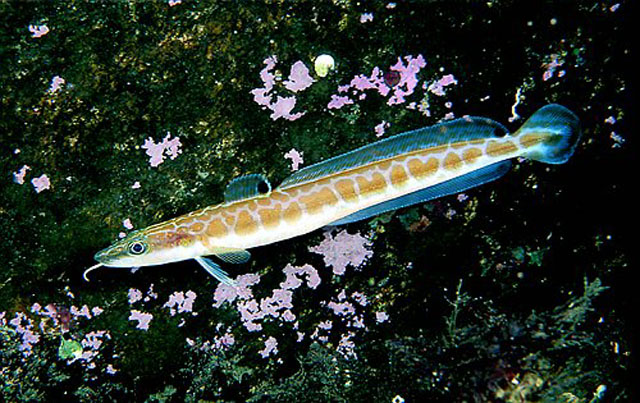| Lotidae (Hakes and burbots) |
| 200 cm TL (male/unsexed); max.weight: 45 kg; max. reported age: 25 years |
|
demersal; marine; depth range 100 - 1000 m, oceanodromous |
| Northwest Atlantic: off southern Greenland and Canada. Northeast Atlantic: Barents Sea and Iceland to Morocco. Mediterranean Sea: northwestern Mediterranean only. |
|
Dorsal spines (total): 0-0; Dorsal soft rays (total): 75-83; Anal soft rays: 58-64; Vertebrae: 63-65. Upper jaw projecting beyond lower one. Color is reddish brown dorsally, grading to white ventrally. The posterior areas of the vertical fins dark with pale margins. The sides distinctly marbled (Ref. 232). Barbel is present in the chin, longer than the diameter of the eye. Black spot in the rear end of the first dorsal fin. Caudal peduncle stout compared to blue ling (Ref. 35388). |
| Occurs mainly on rocky bottoms in fairly deep water (Ref. 9988). Found more commonly from 100 to 400 m. Feeds on fish (cod, herring, flatfish), lobsters, cephalopods and starfishes. Principal spawning areas are Biscay, slopes west of the British Isles and off the Faeroes and southern Iceland (Ref. 35388). Marketed fresh, dried or salted and frozen; eaten steamed, fried, broiled and baked (Ref. 9988). |
|
Not Evaluated (N.E.) Ref. (130435)
|
| harmless |
Source and more info: www.fishbase.org. For personal, classroom, and other internal use only. Not for publication.
